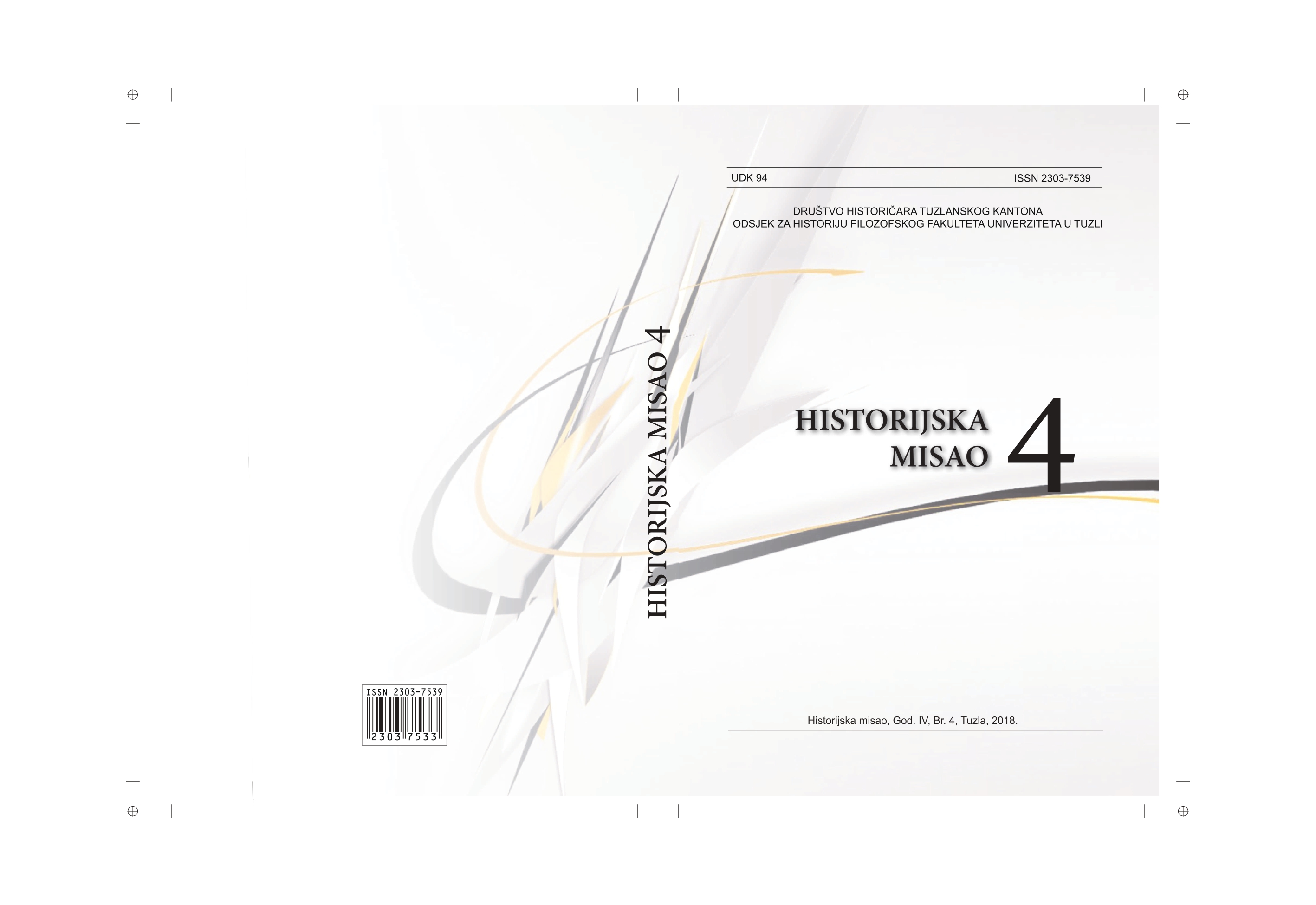RIMSKA PUTNA KOMUNIKACIJA SALONA-ARGENTARIA
THE ROMAN ROAD SALONA-ARGENTARIA
Author(s): Mersiha Imamović, Bego OmerčevićSubject(s): Economic history, Ancient World
Published by: Društvo historičara TK i Odsjek za historiju Filozofskog fakulteta Univerziteta u Tuzli
Keywords: road; station; settlements; milestone; Dolabela; the Romans; the Roman Empire; Dalmatia; Pannonia; Salona; Argentaria; Domavia; Sirmium;
Summary/Abstract: The Roman road Salona-Argentaria belongs to the category of the most important roads that the Romans built in the territory of the present day Bosnia and Herzegovina. It was built during the reign of Emperor Tiberius (from 16 AD to1217 AD). Its construction established a direct connection between Salona (today’s Solin near Split), which was at that time one of the main ports on the Adriatic and the seat of the Roman province of Dalmatia, and Domavia (today’s wider area of Srebrenica), as well as the connection with Sirmium, the capital of the province of Pannonia. This road ran from Salona to Duvanjsko polje to Ravanjsko polje then to Gornji Vakuf to Vitez to Busovača to Kiseljak to Sarajevo polje to Romanija along the valley of the Drinjaca River to its firth in the Drina and further upstream the Drina towards Argentari and downstream the Drina to the Sava and Sirmium. Apart from its great economic importance, this road had a special strategic importance for the Roman Empire. The Romans used the Salona-Argentaria road to transport people and various types of goods, and to transfer military units and weapons to the Roman limes in the area of the Danube. The archeological remains of the Salona-Argentaria road in the territory of today’s Bosnia and Herzegovina belong to the category of the earliest monuments of material culture from the Roman period.
Journal: Historijska misao
- Issue Year: 4/2018
- Issue No: 4
- Page Range: 11-40
- Page Count: 30
- Language: Bosnian

